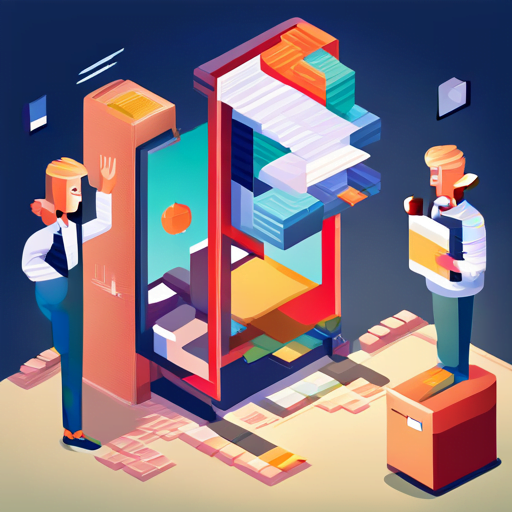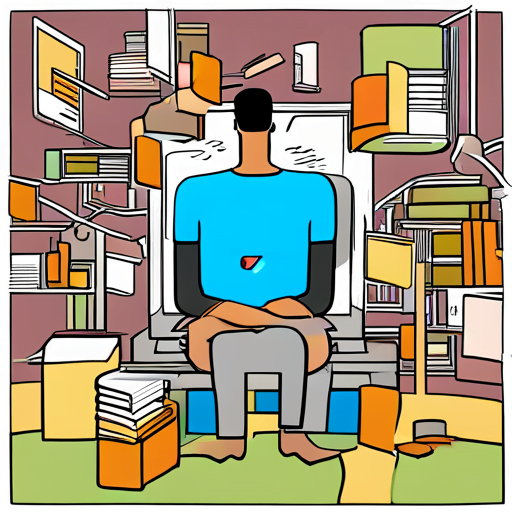Are you one of the many people who have made the switch to e-reading? With the rise of digital books and e-readers, it’s becoming increasingly common to read on a screen rather than on paper. But have you ever stopped to consider how this shift in technology is affecting the way we absorb information?
E-reading is changing the way we read, learn, and retain information. From the way we interact with text to the tools we use to enhance our reading experience, the rise of digital reading has had a significant impact on the way we consume and process information.
In this article, we’ll explore the potential impact of e-reading on reading comprehension, the ways in which it’s changing the landscape of learning, and what the future of e-reading may hold.
So whether you’re a die-hard fan of physical books or a tech-savvy e-reader, read on to discover how e-reading is changing the way we absorb information.
Table of Contents
The Rise of E-Reading

Get ready for a revolution in the way you consume books with the explosive growth of digital reading! Over the past decade, e-reading has skyrocketed in popularity, with millions of people around the world choosing to read books on electronic devices such as tablets, smartphones, and e-readers. This trend shows no signs of slowing down, and experts predict that e-books will continue to dominate the market in the years to come.
One of the main reasons for the rise of e-reading is the convenience it offers. With an e-reader, you can carry thousands of books with you wherever you go, without having to worry about the weight or bulk of physical books. This is especially useful for people who travel frequently or have limited storage space in their homes. E-readers also offer other features, such as adjustable font sizes, built-in dictionaries, and the ability to highlight and take notes, making reading more interactive and engaging.
Another factor driving the growth of e-reading is the affordability and accessibility of e-books. E-books are generally cheaper than physical books, and many libraries now offer digital lending services, allowing readers to borrow e-books for free. This has made reading more accessible to people who may not have been able to afford to buy books or visit a physical library.
Overall, the rise of e-reading has democratized access to literature and opened up new opportunities for readers everywhere.
Potential Impact on Reading Comprehension

The impact of e-readers on our ability to understand what we read is worth considering. While e-readers have made it easier for us to access books, articles, and other reading materials on the go, they may be affecting the way we absorb information.
Studies have shown that people tend to skim more when reading on electronic devices, which can lead to a decrease in reading comprehension. One reason for this decrease in comprehension may be the distractions that come with e-reading. Notifications, messages, and other interruptions can disrupt the flow of reading, making it harder to focus and retain information. Additionally, the lack of physical pages and the ability to easily switch between multiple texts on an e-reader may contribute to a more fragmented reading experience.
However, it’s important to note that e-readers also offer some benefits for comprehension. The ability to adjust font sizes, highlight passages, and take notes can aid in comprehension and retention. Additionally, e-readers can make it easier to access dictionaries and other reference materials, which can help readers better understand unfamiliar terms or concepts.
Overall, while e-readers may have some negative effects on reading comprehension, they also offer unique advantages that can enhance the reading experience.
E-Reading and Learning

You’ll discover how using an e-reader can impact your ability to learn. E-reading has revolutionized the way we access information, and it has also changed the way we learn.
With e-readers, you can access a vast amount of information in a matter of seconds. This means that you can learn more efficiently and effectively than ever before. One of the biggest advantages of e-reading is that it allows you to customize your learning experience.
With an e-reader, you can adjust the font size, line spacing, and background color to suit your preferences. This means that you can read comfortably for longer periods of time, which can help you absorb more information. Additionally, e-readers often come with built-in dictionaries and translation tools, which can help you understand unfamiliar words and concepts.
Another advantage of e-reading is that it allows you to access a wide range of learning materials. With e-readers, you can access textbooks, academic journals, and other educational resources from anywhere in the world. This means that you can learn about new topics and ideas that you might not have been exposed to otherwise.
Additionally, e-readers often come with note-taking and highlighting tools, which can help you organize and retain the information you’re learning. In conclusion, e-reading has changed the way we learn by making information more accessible and customizable.
With e-readers, you can learn more efficiently and effectively than ever before. Whether you’re a student, a professional, or just someone who loves to learn, e-reading can help you achieve your goals. So why not give it a try and see how it can impact your ability to learn?
Future of E-Reading

As you look to the future of e-reading, you can expect to see advancements in technology that will enhance your reading experience. This will likely include integration with other forms of media such as video and audio, making for a more immersive experience.
These advancements will have implications for the publishing industry, with new opportunities and challenges emerging as a result.
Advancements in Technology
With technology constantly evolving, it’s no surprise that our reading habits have adapted to keep up with the times. Advancements in technology have made e-reading more accessible and convenient than ever before. For example, e-readers now feature touch screens, backlit displays, and adjustable font sizes, making it easier to read in any environment.
Additionally, e-books can be downloaded instantly and stored on a single device, eliminating the need for physical books and reducing clutter. Moreover, technology has also opened up new possibilities for interactive e-books. Some e-books now include features like audio and video, as well as interactive quizzes and games.
This not only enhances the reading experience but also makes it more engaging and memorable. These advancements in technology have transformed e-reading from a simple alternative to print books to a unique and dynamic way to absorb information.
Integration with Other Forms of Media
Nowadays, you can easily enjoy reading a book while also listening to a podcast or watching a movie, thanks to the integration of books with other forms of media. E-readers and tablets now allow you to seamlessly switch between reading a book and watching a video or listening to an audiobook.
This integration of media not only enhances the reading experience but also provides readers with a more immersive and engaging way to absorb information. In addition to videos and audiobooks, e-readers and tablets have also made it possible to incorporate interactive elements such as quizzes, animations, and hyperlinks within the text.
This allows readers to engage with the content in a more dynamic way, making the reading experience more interactive and stimulating. This integration of media is transforming the way we consume information and is making reading a more engaging and interactive experience than ever before.
Implications for the Publishing Industry
The integration of various forms of media is revolutionizing the publishing industry and providing readers with a more interactive and immersive reading experience. E-books now contain not just text, but also hyperlinks, videos, audio clips, and interactive graphics. This allows readers to engage with the content in new and exciting ways, making the reading experience more engaging and informative.
The implications of this for the publishing industry are vast. With the rise of e-books and digital media, publishers are now able to reach a wider audience and distribute their content more efficiently. Additionally, the ability to incorporate multimedia elements into e-books allows publishers to create more engaging and visually appealing content that can attract a larger audience.
However, this also means that publishers must adapt to the changing landscape of the industry and invest in new technologies and strategies to stay ahead of the competition. Overall, the integration of multimedia elements into e-books has the potential to transform the publishing industry and provide readers with a more dynamic and interactive reading experience.
Frequently Asked Questions
How does e-reading affect eye strain and vision health?
If you’re an avid e-reader, you may be wondering about the impact on your vision health and eye strain. The good news is that e-readers come equipped with features like adjustable font size and background lighting, which can help mitigate discomfort.
However, it’s important to take breaks and look away from the screen every twenty minutes or so to avoid eye strain and fatigue. Additionally, maintaining proper posture and lighting can also make a significant difference in your eye health.
So, while e-reading can be a convenient and enjoyable way to absorb information, it’s important to be mindful of your physical wellbeing while doing so.
What are the potential environmental impacts of e-reading in terms of paper waste and e-waste?
If you’re concerned about the impact of e-reading on the environment, you may be wondering about the potential for paper waste and e-waste. While e-reading devices have the potential to reduce paper consumption and waste, they also contribute to the growing problem of electronic waste.
E-waste can contain hazardous substances that can pollute the environment and harm human health. Proper disposal and recycling of e-readers and other electronic devices is essential to minimize their impact on the environment.
Additionally, choosing to read on a device that uses renewable energy can help reduce the carbon footprint of e-reading.
Can e-reading devices be harmful to children’s cognitive development?
As a parent, you may be wondering if e-reading devices can be harmful to your child’s cognitive development.
Studies have shown that while e-reading can offer convenience and accessibility, it can also affect the way children absorb information. The blue light emitted by screens can disrupt sleep patterns and lead to a decrease in attention span.
Additionally, the lack of physical interaction with a book can hinder a child’s ability to remember details and make connections. It’s important to find a balance between traditional reading and e-reading to ensure your child’s cognitive development isn’t negatively impacted.
How does e-reading affect our ability to retain information long-term compared to traditional reading methods?
When it comes to retaining information long-term, traditional reading methods may have the upper hand over e-reading. Studies have shown that people tend to skim more when reading on electronic devices, leading to a decrease in comprehension and retention.
Additionally, the blue light emitted from screens has been linked to disruption of sleep patterns, which can also impact memory consolidation. However, this doesn’t mean e-reading is without its benefits.
Electronic devices offer a more convenient and portable way to access reading material, and some research suggests that interactive features like highlighting and note-taking can actually aid in retention. Ultimately, the key is to find a balance between the two methods and use them in a way that works best for you.
Are there any cultural or societal implications of the rise of e-reading, such as changes in reading habits or preferences?
As you delve into the world of e-reading, you may notice a shift in your reading habits or preferences. With the convenience of accessing books on electronic devices, you may find yourself reading more frequently or opting for digital copies instead of physical books.
This rise in e-reading may also be attributed to the changing cultural and societal norms, where technology plays a significant role in our daily lives. However, it’s important to consider how this shift affects our overall reading experience and comprehension in the long run.
Conclusion
So, there you have it – e-reading is changing the way we absorb information. With the rise of digital books and devices, we are experiencing a shift in the way we read and learn.
E-reading has the potential to impact our reading comprehension, but it also offers unique benefits like convenience and accessibility.
As e-reading continues to evolve, we can expect it to play an even bigger role in our lives. From interactive textbooks to personalized reading experiences, the future of e-reading is exciting and full of possibilities.
So, keep an open mind and embrace the changes – who knows, you may discover a whole new way of reading and learning that you never imagined before.
